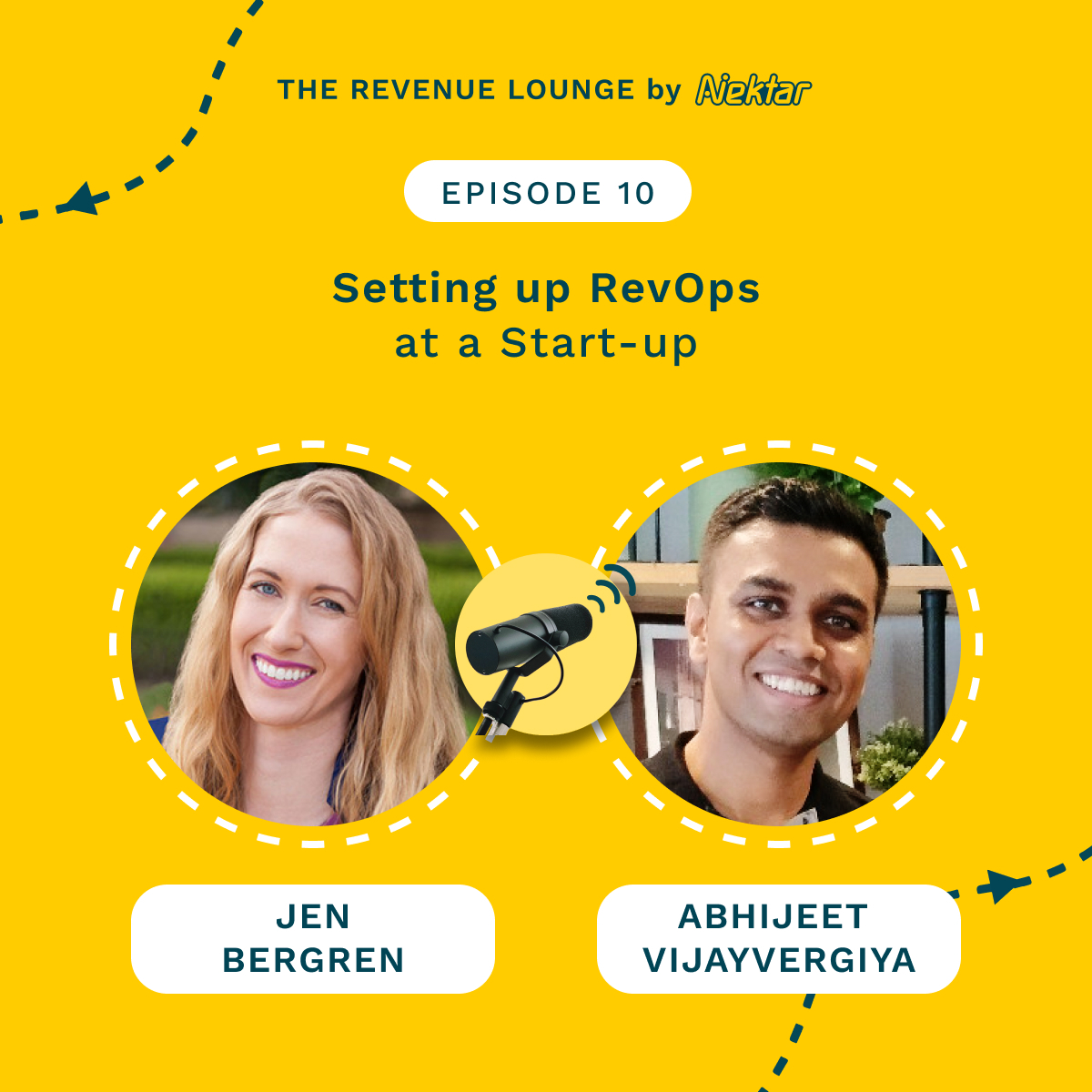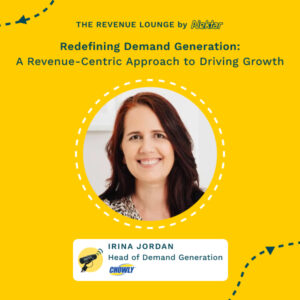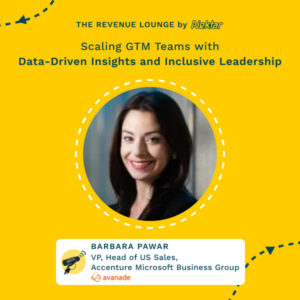Crafting a Data-Driven Customer Success Strategy ft. Sam Slevin
October 2, 2024
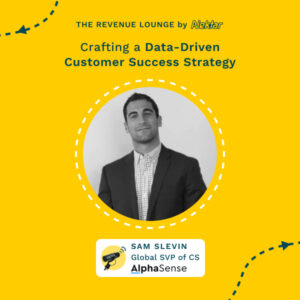
About
The Revenue Lounge
The podcast covers stories from leaders across RevOps, Sales, Customer Success, GTM, Data and Marketing about what drives these functions and what advice they would share with our listeners. With 3 seasons recorded, the podcast currently features 50+ enterprise leaders in the B2B SaaS domain. Tune in to hear from the best in the business
In this episode of the Revenue Lounge podcast, host Randy Likas interviews Sam Slevin, the Global Senior Vice President of Customer Success at AlphaSense. They discuss strategies for customer retention and growth, including aligning customer success with the reasons customers initially chose the product, using data and business intelligence to enhance the customer experience, effective handoffs between sales and customer success, key metrics for ensuring customer health and retention, change management during growth, and more.
Main Discussion Points:
– Importance of beginning retention process with first customer interaction
– Effective sales to customer success handoffs
– Key milestones to track to ensure alignment with original customer goals
– Transitioning to a digital customer success model
– Using AI and business intelligence in customer success
– Organizational alignment between customer success and other teams like sales
Guest Bio:
Sam Slevin: Global SVP of Customer Success at AlphaSense. Expertise in delivering revenue growth through account management and client-facing capabilities. Also teaches customer success foundations course.
Company Bios:
AlphaSense: Provider of AI-powered search engine for market intelligence content like earnings calls, broker research, and SEC filings. Over $200 million in annual contract value. Acquired TEGIS for nearly $1 billion.
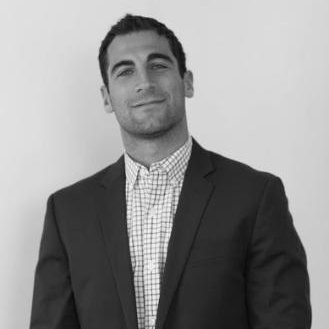
Randy Likas (00:02.798)
Retention is no longer just about the renewal process. It’s about creating a seamless, proactive strategy that starts from the very first interaction and extends throughout the entire customer journey. Today, we’ll explore how to align your customer success efforts with the reasons customers chose your product in the first place, ensuring that every digital touch point reinforces their decision. We’ll also discuss the critical role of data and business intelligence in crafting a strategy that not only retains customers, but drives growth and enhances the overall customer experience.
Hello everyone. Welcome to the Revenue Lounge Podcast. I am your host, Randy Lykos, and joining me today is Sam Slevin. Sam is the global senior vice president of customer success at AlphaSense. His expertise lies in delivering dynamic revenue growth for both emerging and established companies through account management and client facing capabilities. For those of you who’d like to learn more from Sam, he also teaches a class in the foundations of customer success at Pavilion. Hey Sam, thanks so much for joining us today.
Sam Slevin (00:58.707)
Thanks for having me, Randy. Super excited to chat.
Randy Likas (01:01.154)
Yeah, me as well. So Sam, I usually like to start and ask for you to just talk a little bit about, like for those of those on the audience that might not know who AlphaSense is, give us a little bit of a background in terms of what the company does and then maybe a little bit more about your background and kind of your role.
Sam Slevin (01:18.289)
Yeah, so AlphaSense is, and I feel a little silly saying this, as everyone says this now, an AI platform that helps essentially remove…
uncertainty when making really important decisions. And so I say, I joke about being silly about saying AI because everyone has like a dot AI at the end of their name or whatever the case can be. We’ve been a true native AI company for the last 10 years and have actually been in a really exciting position to catch the tailwinds of this AI revolution. And so what mean by what AlphaSense does is we have hundreds of millions of super high valuable content. So things like experts,
transcript calls or broker research or earnings calls or 10Ks and Qs or PubMed and filings and we host it all, tag it, have company name recognition around it and then from there you can ask questions and query to get the information that you need. So we work with hedge funds, asset managers, Fortune 1000, Fortune 5000 companies.
investor relations that are trying to make better decisions, whether it’s in preparation for earnings or if you’re talking to IR or strategic competitive intelligence or generate alpha on returns for a hedge fund or account manager.
Randy Likas (02:43.95)
That’s a great background. Thanks, Sam. And I think what’s really interesting is, as I was doing some of my desktop research, I think you all have 4 ,000, this was probably a little dated by now, enterprise customers. A majority of those are the S &P 500. I also read an article that Jack had put out back in April where he’s like, we basically doubled revenue in two years.
We’re, you know, hit the $200 million in ACV. So it’s a really rapidly growing business, you know, especially kind of what we’ve experienced over the past couple of years. Made a big acquisition recently. And so you’re really, and it’s sort of a speed right now that in terms of growing the business, which I think is pretty exciting. So, you know, I want to start and let me before I get in here, can you talk a little bit about like, when you think about your function, like the global customer success.
How do you organize your team? We’d like to start us a little bit more about the different roles that you might have that roll up into you.
Sam Slevin (03:44.783)
Yeah, so I think when you say customer success, it’s one of those things that means a million different things that a million different places. And so at AlphaSense, my remit is really, think about it by jobs to be done. So there is a post sales, which is pretty standard. So you can think about account management or like a customer success layer. So you think about, we have these product specialists that we work together. They’re deep product experts that pair up really nicely with the account management team.
to drive usage adoption engagement. You have the account management organization that is a commercial organization but really thinks about the customer and everything that they’re doing and then we work together with the sales team to grow. So the AM will source a lot of pipeline because we’re a user -based model and we’re delivering so much value that we may say who else on your team should be working with? Let me introduce you to my colleague. And so that’s one aspect of what we do and how we’re focused post sales and that’s a global organization.
We have people in Singapore, London, spread out throughout the continental US as well. And then we have a support organization. So you can think about that’s pretty basic as handling chats as well as email support, as well as internal support. Hey, I need to get this account set up or…
Can you handle help me with X, Y, or Z? It’s like kind of an internal ticketing system that we can manage. And that’s also global 24 five today. We’re going to go up to 24 seven over the next 12 months. And then, and then we have a pre -sales team, which doesn’t normally sit, I think in customer success. And so, that can be working with most of our customers test before they invest. And it actually is really good for sales and account management alignment and the handoff process because.
I have a team that’s involved in that aspect as well.
Randy Likas (05:41.304)
Right. So the AM team that sort of is involved with sourcing a lot of pipeline, at a certain point, they partner up with the AE. Who actually owns that? Is there variable comp tied to the AM as far as closing the deal, or are they goaled on just pipeline sourcing?
Sam Slevin (06:01.213)
So yeah, the AMs are our goal on a growth goal that they have to work together with their AE to close. They don’t have like a commission structure or something like that. It’s a bonus tied to that. Then they have a gross renewal rate, which is kind of one of the more critical functions. And then we have a discretionary component that is like those source pipeline and like the things that we believe lead to the outcomes over the course of the year.
Randy Likas (06:28.142)
Okay, and then how about the actual renewal itself? Who owns the renewal?
Sam Slevin (06:33.029)
So the AMs own the renewal, but when there’s growth opportunity, which oftentimes there is because we’ve added products, users are increasing the price, like that’s done in tandem.
Randy Likas (06:48.898)
Yeah, great. Really helpful. So Sam, we’re late September now, and for most companies, it’s planning season, right? So they’ve either just started it or they’re about to start it and they’re thinking about.
how do we balance the strategic direction of my function with the operational excellence and the need to scale efficiently? And I saw a post that you had shared a while back, which is your love -loathe relationship with annual planning. And so we’d love just to understand, how do you think about that as you look at what’s happening in the market right now, what’s happening with your customers, and balancing that with your needs for next year?
Sam Slevin (07:24.723)
Yeah, I’m right back into that moment of love lode and I joke, have a newborn but nothing keeps me up more at night than thinking about 2025 planning and all the different possibilities and ways in that we can go. So specifically on the question of how do I balance what we need to do today versus, it changes every year. So.
Usually there’s some sort set of growth goals and parameters on cost that we need to set and then it’s kind of like It’s what’s so exciting is it’s like a blank canvas essentially where you can in theory do anything that you want differently and then you have to me manage that against change management and how would you roll that out and the impact to the organization You we just you mentioned we just acquired tegus for almost a billion dollars. So that’s a really exciting
organization and a ton of talent that I’ve been a part of, this is my fourth acquisition at AlphaSense. And so because we’re in the FinTech space that is actually servicing, that’s not like a payment processing company, that’s like actually servicing knowledge workers. It’s a huge opportunity for talent that knows how to service these types of customers. So that’s a big piece of the planning this year is like how we integrate
Tegas and Tegas customers and AlphaSense and part of the migration plans all together while decreasing burn and increasing growth.
Randy Likas (08:56.462)
Yeah. So with Tegas, that, I’m sure you guys have, I see the headlines usually as like 4 ,000 enterprise customers, but I’m sure you serve mid -market, maybe even some SMB customers as well. With Tegas coming on board, how many customers are you looking at now globally?
Sam Slevin (09:13.395)
many more. don’t know what, what is public or what I can share in that kind of acquisition. So I don’t want to share anything that’s, that’s, proprietary, but one of the things that was, that’s really exciting is so many of our customers actually had, had overlap. so they would, Tegas is a content set. So an expert transcript library provider, they are the largest. We also did that. And so we really became one plus one equals three.
They also had acquired this company called Canalist and Bamsec. And so they have this whole platform that they’re delivering a lot of value to their customers on. And we have a lot of the same customers. Maybe it’s the same user that’s using it for both and now we can put it all together in one place. Or it’s different users within the firm that are using it. Cause like a hedge fund, for example, a lot of the, they kind of operate as like
their own little LLCs within the organization that has their own pool of capital under the bigger umbrella so that the left hand might not be talking to the right hand. And so they might have a very different tool set and stack.
Randy Likas (10:21.484)
Interesting. So Sam, you’ve emphasized that a strong renewal process begins with the very first customer interaction. And I think that’s great. And I want to spend some time digging in on that. Oftentimes, what we see is there’s this gap in what the AE knows from their sales process or maybe landing that first deal, like buying committee members, influencers, politics, that type of thing, that either never makes it to the CRM. It’s stuck in their head or it’s locked up inside of like,
different email threads and meetings and things like that. And so there’s this, it’s just stuck or buried. And so, you know, what happens is the deal is really close to signing or it’s just after signature. And we schedule this meeting with the CS team and we’re like, okay, I’m to do this transition meeting with you. And it’s just this big dump, right? But a lot of that is missed. And so can you elaborate a little bit more in terms of how the AE and the AM handoff works from the first touch point to make sure that the initial onboarding is setting the stage for long -term success and retention?
Sam Slevin (11:20.935)
Yeah, absolutely. And of course, we have an ideal state and that’s what we always drive towards in the playbooks that we are doing there. But for me…
I focus so much on the first interaction because that is one completely within your control. There are so many things that happen over the course of a life cycle that are not in your control. so starting with the first interaction, controlling what you can control is so important. I just think about, I have a ton of empathy for the buyer who their general life cycle is maybe they’re getting pinged a bunch of times by SDRs, million email campaigns.
finally get on a demo with an AE. Now the way that we work is in a convert, someone on the pre -sales team is helping work with them and generate value and show them wow moments. Then the AE is coming back. Then they get the AM. And I don’t think there’s any worse experience for a customer at that point to say like, so tell me about yourself. It’s like, it has to be, this is what I know. And this is how, where we can go from here. And so I think it starts with.
The way that RAEs sell is they put together a proposal and it’s understanding what are the goals and what are we trying to achieve. Because we have a trial process, before you put someone on trial, you need to have trial qualification and trial criteria. So what are the things that look like if we hit X, Y, and Z during this trial, how will that make you successful? And then we’re going to move forward with a deal. And so to try and be as, you know, I just think about it all as building upon each other.
So the sales team has that proposal, then that should be the first slide of our kickoff deck. And the kickoff deck should be like, this is what I heard is the reason that you bought. This is what you were trying to solve. These are your words. This is what you told the person. What do I have wrong here? So it’s not like you’re making them repeat. You’re letting them fill in the details who you’re building upon. And then that’s your criteria to make sure that that is like your nori.
Sam Slevin (13:29.361)
your North Star in their words of like how we think about everything. So whatever their North Star is, then it’s the AM’s job to make that continue to come true and to prove over and over again that these are the things that they, the reasons they bought. And here is me demonstrating how that is happening through the usage, through the value stories, through the ROI of the partnership. And then you’re doing something like a strategic business review, which again, I think is like overused and people do it quarterly or.
It’s like a check the box item and it should be, you said this is what you bought. This is what we agreed upon was success. Here’s what I believe how I’m delivering this or not. And I need to get this back on track. And here’s where we’re going to go from here and making sure that you have that. And then if you’ve done that and then there’s obviously way more intermittent outreach, making sure you’re adding that being the value added, constative partner throughout the partnership, then come renewal time, it shouldn’t be.
Randy Likas (14:10.158)
Mm
Sam Slevin (14:26.385)
are we going to renew because they bought, you confirmed why and what success looked like. You then had a checkpoint with them about what that looked like. And now we’re talking about renewal, is maybe how do we grow together or where else should we be working or based on these things that we saw and working together with the A to build that momentum.
Randy Likas (14:48.46)
Yeah, I think that’s fantastic. Let me just dig in on that trial piece you’re talking about before, because I think most organizations use trials as like the last resort, right? And so if I’m understanding you correctly, like you guys kind of build it into your process because it helps set up the success later on. that correct? Or how do you do like?
Sam Slevin (15:05.467)
Yeah, I think one of the things that AlphaSense does really, really well is we don’t sell ahead of the roadmap. And so it’s not this thing that maybe could happen if we deliver all these different areas. It’s like, there’s more that’s coming and we’ll definitely sell the future of what’s happening. here is what is happening today. And we use that as a process that, like at previous companies I’ve had to deal with like,
this is what the salesperson told me and this was a promise that maybe did or didn’t come true and you’re competing with roadmap preferences, we can say you bought this, this thing based on what, what you said it was going to do and here’s how we achieve it. Now we know we’re not done. was a one week trial or whatever the case may be that, that did that in qualified, but yes, that that’s one of the ways that we stay super hyper aligned.
Randy Likas (15:52.546)
Yeah, I think that’s really powerful. So let’s talk a little bit about the key milestones that you recommend tracking to ensure that Northstar that we established at the beginning is aligning to the original intent and goals. because, as you mentioned, that ultimately is going to lead to
at the time of renewal, like the desired outcomes you want. Like renewal at a minimum, expansion opportunities as well. So I guess the question is, how do you track that you’re aligning to each step of the way?
Sam Slevin (16:23.633)
Yeah, well, first, think it obviously starts with what we talked about, really tight AM, AE, handoff, collaboration, coordination, not making sure that the person has to repeat themselves over and over again. Then we talked about onboarding and not, I think a lot of organizations talk about onboarding as a call.
And we think about it as an experience. So what are the milestones within onboarding that you are hitting? And I think this is where you want to make sure there’s gut feel and anecdote, but also data. Like you need to be working with your BI team on what are the key components that make them stickier, that make them more likely to stay with you than not. And that’s how you should be aligning your entire, you know, this is successfully done out of onboarding. should be at some sort of time constraint as well as kind of the
individual components, features, value stories, et cetera, whatever makes sense for you as an organization that happens. Then they move out of that and then there is like, all right, now what does true adoption look like? Is that a build upon? Are there new things or features that should be done? Like I used to hear this and like 10, 15 years ago, I would hear.
Salesforce knows that you create two dashboards, you’ll never leave. And so it’s like, so I’m always in like, and Salesforce is obviously an incredible SaaS business and ones that we all aspire to be in the size and scale. But like, that’s what I think about is like, what are the things that if they do, they will stay here and be more likely to adopt and go deeper into the product because that ultimately tends to be value derived. And I kind of think about two things when we’re getting started with the
with any type of customer. One, start with the end in mind. Let’s assume that they are gonna cancel in 365 days and like let’s assume that that is the status quo and how do we do everything we can that if they get there we’re like, no, no, no, you said this was your North Star, this is what we did, this is how we delivered, this is how we’ve checked in the entire time and so like starting with the end in mind and working backwards from that is absolutely critical.
Randy Likas (18:35.82)
Yeah, that is so refreshing to hear. It’s really important, I think, to hold not just yourselves accountable, but hold the clients accountable to what we talked about at the beginning. So when you guys land, and I should probably maybe ask this a little bit earlier when we talked about expansion. So when you land, I know there’s probably several different buying committees that you could land with, right? Corporate strategy, market intelligence, business development, &A, IR, so on and so forth.
Do you think about, and sometimes you might land wall to wall, but my guess is you probably land with like a function or two and then sort of expand from there. Do you build that sort of expansion plan into the way in which you’re delivering or are you really just focused on what they’ve purchased and how we deliver value against that?
Sam Slevin (19:21.927)
I think that’s one of the reasons that we keep the AE and AMs kind co -owning these, because it is such a land and expand strategy, and why we work together but almost separate, where the AEs are going to hunt into different…
divisions and groups with under the we’ve got the MSA signed so now we can that which is a really you know hard process and so you get that part done and then we can figure out what are the order forms that we add on so that makes it a little bit smoother but like the way I see our job to be done is like if that person says hey this you know sales rep is calling me from AlphaSense like you use that what do you think they’re like my god I love it I was actually gonna tell you that we should be using it because that often is what
happens really quickly. People get pinged from a salesperson, they quickly look at that person on LinkedIn and then see if there’s connections or whatever the case may be. And then they’re like trying to figure out if they’re talking to each other. In the best case scenario, and what we try and guide the AMs and AEs to do is that deliver, like just be great. I think I said two things before and I only talked about one. The second is that we live,
on value is greater than price. That is like, just live there and that is like the number one thing that we need to be doing. And making sure that we are, like I just like have this like value greater than price and that the value has to be greater and how are we living and breathing that. And if we are doing that, then we have the right to ask our customer that we built a good relationship, we’ve delivered X, Y, and Z for, hey, my AE is trying to get in touch with these four people. It seems like you’re connected with them on.
on Can you make that introduction? actually have an email for you. Would that be like really easy? Like you just told me how much value you’re adding. So like, I’m assuming you want to help your person and like that’s such an easy way to get, it’s such a better way to get the meeting. So yes.
Randy Likas (21:14.614)
Yeah, 100%. So we often hear that there’s a challenge in success, which is the sales rep to get the initial land had identified their buying committee and the influencers, the economic buyer, so on and so forth. Then they land the deal. And then those people kind of turn it over to the people sort of responsible for administering the contract. it’s hard to get them engaged again.
you’re really focused on value in it. So that might make it easier to keep those folks engaged. But I’d love to hear sort of like, is that an experience that you see as well where you’re working not necessarily day to day or week to week or whatever it might be with the folks who have the power to expand or renew, but you’re left with sort of the people delegated to manage it. And if so, if that’s the case, like how do you then make sure that you’re able to ladder back up to those senior leaders at the right touch points?
Sam Slevin (22:08.379)
Yeah, it’s definitely, it’s definitely a problem. think you, again, it started like, why did that person buy at that moment and what did they care about? And who is the decision maker? Who’s the economic buyer? Who has the influence? And how are they measuring whether this is successful or not? And my belief is like when an AM or a customer success rep says to me like, they won’t answer me. I’m like, well, you obviously haven’t delivered value to them and you don’t care what they care about. The AE,
got a stranger to sign up for money. like, so they’ve already put down money now. And so we need to make them effective in that route. And so it goes back to like, why did they buy? What are the things that they care about? And if we’re not delivering success on that in the first 90 days, like that’s a time where you send that message to them and say like, Hey, I’m a little concerned. Like you bought for these three things. Like I don’t think we’ve connected or done these things yet. And I’m concerned.
Can we hop on the phone and I have a couple of ideas on how we can fix this, but like I need your help. And you got like, I think that that’s a lot of people are scared to do that, but like you need to, if you don’t, if you don’t do it again, you’re at the end of 365 and like they’re going to cancel. it’s not going to not cancel because you don’t pay attention to it. It’s good to call those things out and figure out why you’re concerned if you don’t have that buy in or what happened or whatever the case may be. And then in the meantime, you should be building a bottoms up case and asking.
But again, if you have a person who loves your account and loves what you’re doing, you’re delivering a ton of value, making their life happier, they’ll give you a lay though, yeah, this is political, this person didn’t want it, but this person shoved it down their throat. You can start to understand what’s going on and how you actually can navigate that as best as possible.
Randy Likas (23:56.652)
Yeah. There’s a trend that we’re seeing in the market, is how, because it’s so hard to land customers right now, everybody’s doubling down on making sure that we can retain and expand. And there’s almost this movement of treating your renewal committee, if you will, similar to how you would do it on a brand new deal where we’re applying MedPic type of processes to identify
decision makers and paperwork and everything that goes into bed pick. Do you manage a similar way as far as making sure that we’ve got the right people involved throughout or are there any criteria? I guess ask a different way. What are the signals that you look for to make sure that you’ve got sound renewals coming in?
Sam Slevin (24:46.577)
Yeah, I would actually think, again, I think the med pic in that piece is the very end of the process. And so I actually would go a step further and say that what a lot of customer success teams do, or now they’re starting to, we need to be commercial. We need to treat this in the same rigor as the sales process is, does your team have call quotas? Do you break down their annual retention number?
into a quarterly number, into a monthly number, into a weekly number, into a daily number? What are the activities that need to happen? That is what sales actually does. Then the MedPic is a framework, when you wanna use MedPic or Challenger sale, you’ll put some methodology that is a process that makes sense for that, and I agree that that’s an important piece, but I think that you jump to the conclusion there, and it’s like, how do we pull this deal back, or whatever the case may be, it’s it’s.
For me, it’s like, how often are we talking to the users? What is the value that’s being derived? Are they engaging with a certain amount of users? What percentage of those for the day, week, month, like does your AM or customer success person know what a great day looks like, a great week, a great month? Do you have quarterly business reviews internally to hold the team accountable on what they said that they were gonna do? And then sure, wrap it in MedPic, wrap it in Challenger Sale, wrap it in whatever methodology you want to.
But I, and I agree with that and that’s important, but I think what’s often overlooked or not talked about enough is like, that is what you need to do with a customer success organization. Inputs leading to outputs.
Randy Likas (26:22.19)
And how do you all measure that? that’s a really good point. But as far as making sure that like we’re winning the day, right? Because if you win the day, you win the week, you win the month. How are you measuring like how your team is winning the day?
Sam Slevin (26:37.671)
Yeah, it starts like with high value calls. There’s a certain, like we work backwards from how many users they have, how many accounts they have, and what we think is a good delivery of the customer lifecycle. And there’s a minimum amount of calls that they need to do. then again, like we’ll coach, it’s not an SDR motion, just like blast people with calls. It’s not like, how many dials do you make? It’s how many like high value calls do you have? It’s how many strategic business reviews do you have?
What percentage of your users have you spoken to in a month? What percentage of users have you spoken to in a quarter? How many calls? So we have a framework and we tweak them as the business grows and what we align. And then those lead to outputs. We believe if you’re doing those things, which you 100 % can control, it’ll lead to source pipeline. It’ll lead to better forecasting accuracy. And so we try and understand, like I think about if we have a problem, is it?
We’re not driving the top of the funnel enough, the activities that we can control, and then we need to work with the rep on those activities. Is it not the right email? Are you not being value oriented? Are you getting a bunch of people on the first call and they won’t get on a second call with you? You haven’t added value then. And so then we need to do coaching in that way, or is it an effort, like skill or will, and then figuring out how you coach and develop based on those things. And then for me,
So those are things, and then we have a discretionary component of their comp that is tied to making sure that they hit those inputs so that there is a carrot and a stick. You can get 100 % of your variable compensation if you do these things, because we know or we believe that these are the outcomes that generate positive outcomes. And then I have my managers give me a month to date. They walk me through their numbers with, they look at them, they have to analyze them and give me a write -up of what they’re seeing, feeling, thinking.
so that it’s like it’s being inspected, measured, constantly thought about and talked about. And then another further point of reinforcement is the, we have a quarterly business review. So every single account manager presents to their manager and leadership team on like, here was what I did. Here’s how I did on these key metrics, whether it’s effort, input, source pipeline, my retention rate. Here’s the strategies and tactics that I enabled.
Sam Slevin (29:03.697)
Now, let’s spend most of the time going forward. And what am I going to do on a go -forward basis? And what can I hold you to? And then that becomes the beginning of their QBR the next time. So they have to own their numbers. it’s not just at the end of the year, at the end of the, you didn’t get to your numbers. It’s a measurement and impact. And then as part of the discretionary, each quarter my managers will look at, here are the five dimensions that I said that we’re measuring you on. You’re above, below, or at.
and here’s a discretionary component as well. And then that gets sent to me as well. So I get to see those each quarter and understand what’s going on.
Randy Likas (29:40.322)
Yeah, that’s a really, really well thought out process. I imagine that your team is probably looking at several different sets of data to determine health, right? And so, like, there’s probably product consumption data that they look at. It go Salesforce, maybe a Gainsight or a similar CS type of tool. I’m curious, like, are they managed as…
all separate systems? Or have you guys built like a cloud data warehouse that sort of brings all these data points together and it will look at different data points side by side? Like how does it do telemetry work sort of for your teams to help deliver value?
Sam Slevin (30:19.667)
Yeah, think that, so I think what a lot of people do is they jump in and I’ve used kind of all the different customer success tools over the last 15 years or so. What a lot of people do is they’re like, all right, we have a churn problem. like, we’re trying to get efficient and let’s like, let’s justify a customer success tool to do this. And then it’s like a year build and then if you don’t actually have the right, like kind of the precision that I just talked about.
to employ and what success looks like and have the right data points of what you’re trying to drive to, then it just becomes another tool. So we use Catalyst now as a tool. And it’s a work in progress where it combines usage data and activity and revenue. So like a combination of Salesforce plus Tableau plus other data warehouse items.
then I think a big one is Gong for us, like from coaching and development and watching your own game tape. Like, I don’t know if I’m supposed to be plugging the tools that we use, but these are what we use. And I’m a huge Gong fan personally. And so we’re using the customer six, and then there’s still these things that we still need to do in Salesforce. And so like, as we launched a V1 of Catalyst, V2, V3, V4 is gonna be like taking all the disparate pieces of information and putting it.
under a slick UI, is catalyst for a customer success platform.
Randy Likas (31:52.57)
Does your team mostly live out of catalyst as opposed to like say Salesforce?
Sam Slevin (31:57.331)
I would say up until we just launched Catalyst in the last two months to the team. So it’s a, and I’ve learned from kind of failed launches in my past, so I’m hoping that this is a net positive. We’re seeing great usage and adoption from the team so far. Eventually we would like everything to live in Catalyst. There are still bespoke places that you can’t get to because I don’t want someone, but then you’re never gonna replace Tableau overall or a data visualization tool for like.
You need to put together a super in -depth strategic business review on usage. You need to like, you know, really get like a very custom data pull that aligns to the story and value that you’re working with. But like day to day, lack of usage, lack of XYZ content set. Like those are the types of things that set off quick alarms and should be allowed to move really quickly in action.
Randy Likas (32:46.616)
Yeah. Let’s transition the conversation a little bit and talk about this sort of movement to a digital customer success motion or model where you’ve got, we’ve seen it work a couple of different ways where you identify maybe a lower segment or less strategic clients that you want to move more digital touch points to as opposed to like the white glove experience. I guess my question is like, does a well executed digital success strategy support both that lower segment
as well as the enterprise or how do you think about like digital as a place in the overall customer success function?
Sam Slevin (33:23.185)
Yeah, think it, so that’s what I love about it is that it does. It supports both, in my opinion. It’s a very similar motion of a multi -thousand organization that you’re supporting and a one -person shop because you can’t get to every single one of those people in a white glove support. So what are you doing? You’re either doing train the trainer programs or doing big group trainings or floor walks or things like that.
But you need extra like air cover and that’s what it is, is it’s air cover. And then on the flip side of a smaller account, if you have a big book of business or a lot of accounts in your book of business, you’re probably gonna pay that small account a lot less attention and love and through a digital experience, trigger -based usage and the things again, aligning to like what are the things that drive value and make them happy and excited and stay long -term.
you can do that. so with the strategic accounts, you want to customize it. If you’re working with a Fortune 100 company, you want to think about the cohorts of people that you’re working and take the baseline of the milestones and customize it and make it a little bit more white labeled for them. But the bones and the infrastructure is generally the same.
Randy Likas (34:42.22)
Yeah. You know, I had a conversation three months ago with one of our large customers and it was with the guy that ran the, he was the gainsight admin at his customer. And prior to that, you know, he worked at some pretty large companies, but he actually spent six years in the professional services division of gainsight. So he’s like, I’ve probably touched a thousand different instances of gainsight over my, you know, my career. And he’s like, every single one of them.
has a contact hygiene or contact problem. And he said, and like, we got to solve that, especially as we roll out like a digital success program. Like we have to make sure that the data is clean so that we’re not taking a shotgun approach and sending out messages to everybody because that’s a bad customer experience, right? So can you talk a little bit about like data hygiene and how do you overcome some of those issues that you might have where the data that
catalyst pulls from is stale, dirty, outdated, whatever it might be.
Sam Slevin (35:45.905)
Yeah, before we move people to digital touch, that is a extremely manual scrub. don’t do that. It’s like you create a segmentation that you label as tech touch, but then you need to go through all these different check marks because otherwise that’s what I’ve experienced. You’re like, this is what we say is tech touch. And like, let’s just move them and go. And, and you want to iterate and make sure that you’re doing things in the right way. So I think, that’s one piece. I don’t think you get away from.
a human intervention in some level, shape or form in terms of like pure digital touch. Like I think there are, I think like if users leave, there has to be some sort of trigger that happens that fills that seat or maybe it’s through the SDRs that they’re tracking that. But like there has to be some sort of feedback mechanism that if you no longer have someone there, unless you’re comfortable with it just turning, because you factor that in and that’s how you base your model, we don’t do that.
Like we want every customer to renew. And we’re not doing digital as a, like I’ve been at companies that have done digital as a, we absolutely, like our churn rate on this SMB business is so bad that we can’t possibly serve it with a human. And so you’re going to do things a little bit differently and a little bit quicker. For us, we don’t really work with like true SMB because of the cohorts of customers that we work with, but maybe the smaller.
firms that we’re working with, we believe we can deliver a better experience for them where it’s based on the things that we think that they need to do, but we do a lot of manual inspection before we put them into that.
Randy Likas (37:25.218)
Yeah. And so who owns that manual inspection? Is that your team or is it your RevOps team? It’s a lot of work, right? It’s a of manual, it’s a lot of tedious work. So who sort of owns that process?
Sam Slevin (37:37.715)
Yeah, it starts with rev ops in terms of the segmentation, but then my team has done the manual. We’re like, we’re moving this over and here’s like the six check boxes that we need you to confirm. And ultimately it’s a good thing for the AM like you can spend more time on the concept. So you can, and then, and then it’s how do you create, is it every week that you do it every month? Like we’re coming to a quarterly cadence where it’s like every quarter we’re going to look at who reaches this segment and how should we do it? And what’s the process for.
Randy Likas (37:52.344)
Yeah.
Sam Slevin (38:06.963)
for moving it on and that becomes part of your operating cadence like a QBR, like a business review. You kind of look at your own internal processes like a customer lifecycle. But it’s definitely a pro, I mean, our data is not clean.
Randy Likas (38:22.572)
Nobody says, yeah, for sure. So I guess looking ahead, you what do you see as sort of the next big shift in customer success and, know, maybe how come what company should sort of do or prepare for that.
Sam Slevin (38:39.879)
Yeah. So I think you said in my intro, like I teach this customer success essentials at Pavilion. And one of the things I asked, cause like one of things I get nervous about, like we are true native AI companies. Like we don’t use enough AI, I don’t think like day in and day out. And so I pulled the audience in my last group of like, what percentage of you use AI in your, in your like day to day? And it was like, like, or as part of your like workflow in the customer success sales.
revenue world and it was like less than 5%. And so it’s like, I feel like there’s a lot of hype. It’s like Klarna did this thing and their earnings call and like everyone’s like, how did they do that? And they could reduce these different areas. So I think like.
Like I think the answer is AI. just haven’t seen enough tool set on how you do that in the right way and how do you do it correctly. And again, it depends. Like if you’re trying to like completely cut costs at the expense of customer experience, like this cohort or segment is just like a flag on your business and you need to like, can’t, it’s such a negative, which I’ve been at companies in the past where it is, but like the way that I think about it is when you get to a certain size and scale with your organization.
You have to be really careful with anything that you’re deploying and what that looks like. So it feels like the AI customization, you know, I’m looking at these tools all the time. Like this idea of like a saw some tool that like you could teach it all your sales collateral. And so we were thinking about it as like an enablement play where like you could sit there as a rep and like get the marbles out of your mouth and like.
train them as a prospect through the GOM calls that they listen to and do that. I think there’s a lot of increasing ramp time and maybe answering some of the level one support questions over time so that the human beings can be focused on the more value added work. And I’ve seen Einstein demo for Salesforce. I’m like, my God, if we could connect Tableau. I just think we’re a longer ways away from actually having value utility.
Sam Slevin (40:47.815)
there other than kind of like using a chat GPT or a llama or a pubexity or any of these to like, did I have any typos in this email or make this email a little bit nicer? I’m coming across like to help me change my tone and wording. So what else? I think we’re a user -based model, but I am interested in like if you play out the next two to three years on
Randy Likas (41:04.3)
Yeah.
Sam Slevin (41:16.723)
And I feel like user -based, you know, over the Salesforce model has been, you know, what everyone kind of tries to get to and it aligns you with the customer as you grow with them. If AI does start to rip its way through all these organizations and it decreases the amount of heads that people need to hire because more work can be done, do you, is there a new pricing model that tries to take over? You know, I know Snowflake uses like the user -based model, but like…
They had this amazing run and now they’re flatlining on net. So I wonder on how you think about those things as well.
Randy Likas (41:52.568)
Yeah, it’d be really interesting to think about lookalike companies that have similar consumption and do a dynamic pricing based on that. Using the AI for that would be interesting. And then I think I agree with you. Think about the use of AI. There’s so much hype in the market right now. And I think the example that you talked about, which is if we can look at standard
collateral or support. That’s a good use case, if you try to use it, any AI solution has to have good data as the basis. I think we’re still really far away from companies having good clean data and go to market especially to use those models.
Sam Slevin (42:34.929)
Yeah, and I think this is like one of the things that we encompass all the time. And my boss just wrote a post about this on LinkedIn where it’s like this idea of buy versus build, where a lot of companies are like, we need to buy Chachi BT and this enterprise model. it’s like, and how much are you spending on that? And then how many engineers are keeping that up to date to making sure that you are incorporating all the right things and then constantly training that? And so that’s like a pitch for why you should be using AlphaSense instead of, you know.
building yourself, but like it’s the same type of like these things, it’s hard enough to implement a customer success tool, is just, you know, bad data. And we were just talking about bad data and bad data out. Like imagine trying to change, train this thing that like could be giving you the wrong information and whatever the case may be. And so, so I’m positive that it will continue to improve, but like that feels like it should be the right answer. But I feel like the tangible aspects are, are not there yet. And I said, I said when I, when I teach this class in three months, I hope that
I’m like, yep, here’s the three use cases I could use, but for now I don’t see it yet.
Randy Likas (43:37.356)
Yeah. All right, so last question before we transition to what we kind of call the lightning round, which is a little bit more personal. What haven’t I asked you about as it pertains to retention or growth that maybe I should have?
Sam Slevin (43:55.325)
I think we talked a lot about sales, AE handoff, but one of the things that a larger organization that we didn’t talk about is how do you get alignment at the organizational level between sales and account management and thinking through those things? I think that I happen to be lucky. I’m working with an SVP of sales in the Americas.
that I worked with at my previous firm and we just have like such a deep trust and like there’s so many ways that you can, and it’s Peter Kovacs, he’s an amazing seller and I’ve worked with him at my previous company, like there’s just so many ways that you can misinterpret something or have bad intent or like they think like that person just cares about their goals and I just care about my goals and so, and you come into that with a message of like this is the sales guy and this is this.
account management leader and they don’t care about growth and they’re not commercially oriented and all those things. And so like, how do you get aligned? Like first for me, like I am aligned at ARR, like ARR growth is incredibly important to me, whether it’s retention, gross, net new sales, then I have a net and then I have a gross in that order. And so I can say like, with him, have a
Randy Likas (45:04.974)
.
Sam Slevin (45:18.301)
great relationship with either because we’ve worked together. I actually I’ve never been more aligned at a level of leadership so that we know if things get like escalated and misread it with our teams that like it’s very rare that we are going to disagree or and I think it has to do with like compensation alignment, alignment drives behavior. And so like I’m a big believer on that piece. And that was one thing you didn’t ask.
Randy Likas (45:43.862)
Okay, that’s great. I lied, I have one more question based on what you just said around alignment. So what are the other functions in the organization that you have to have, like similar alignment you have with sales? So as an example, product, right? You guys are hearing all the time. How do you, I guess it’s a two -part question. How do you align with other functions besides sales?
And then part two of that would be like, because of all the growth that you’ve all experienced over the past couple of years, there’s a lot of change management that goes into this as well. And so can you maybe speak a little bit about the change management piece too?
Sam Slevin (46:14.705)
Yeah, so one thing for me that was really pivotal for my career, I actually reported into a little, when I was a director of customer success at a previous company, I reported into the VP of product. And so tons of empathy on both ends. And I think if you’re both walking into this being like, I don’t want your job, you don’t want my job, I feel bad for you. you have the hardest job in the company, you have the hardest, like I think that that really, on a human level, like you’re like,
If you come in with positive, good intent, whether it’s pro, but like I got to see kind of firsthand the things that, Henry Wong, was, who was the VP of product, dealt with day in and day out and like the way that he put together business cases and things like that. I think like making sure you can speak their language and how they understand it and have empathy on that. And I got a lucky kind of fortunate reporting structure for a year or two that gave me that insight.
that I wouldn’t have otherwise had. like I’ve tried to, I’ve never been reported into the head of marketing, but like I try and like understand at the end of the day, like what are the things that you are motivated by? What does success look like? If you’re a new leader and we’re growing really fast, like what are wins that you’re looking for? How can I get you some of those early wins? And so that we can build a relationship. I think the other thing is like, I think a lot about what is my…
day -to -day cadence, week -to -week, month -to -month cadence, and I always make sure I do kind of an exercise every probably half a year where I look at where I’m spending my time and I’m like, should I be having more regular or less regular one -on -ones? Because what I try not to do, and I think a lot of people do this, is an issue comes up and you ping the person, and the only time they’re hearing from you is like, you need something or you want something, and so what I try to do is have enough of a regular touch point with the
whether it’s the CMO or the head of product or our CFO or rev ops that I’m aggregating things and prioritizing them versus like a slack ping and like a constant fire this and that when like, I hate when people do that to me and it’s so hard to like, it’ll set me off or do I stop what I’m doing or I have these things? And so it’s like, can I stack order them and prioritize them? And then once in a while, if I need something, it’s not the only time I’m going to you. And so like,
Sam Slevin (48:39.559)
It’s understanding those objectives. And then something like digital success, that we talked about before, you can’t do that without marketing, rev ops, BI. And so you have to align on like the why, here’s what we’re trying to do. Who’s gonna own what, here’s the project plan. And how do we like hold each other accountable and making sure that that happens. So I think like it’s kicking off initiative, building a project plan, starting with the end in mind of where you wanna get to, breaking down those milestones.
Randy Likas (48:49.72)
Yep.
Sam Slevin (49:08.317)
and giving people ownership so that they can go do their best work.
Randy Likas (49:11.586)
Yeah, what I love about what you talked about is two things. Empathy, right? First of all, like, it’s not about me, but understanding what they’re up against as well. And then the second part is like building those relationships, right? And having those relationships. So when things get hard, right, you have to those hard conversations, you’ve got the relationship and sort of the trust to be able to do that. So look, we’re having a really rich conversation, but we’re running short on time. So let’s transition over over the lightning round here. So first question, what is the favorite part of your job?
Sam Slevin (49:44.819)
I think it’s gotta be the people, the people on my team, like working with people for a long time, watching them grow, take on challenges, deliver amazing outcomes. Like that is at the end of the day, because at this point, like with the size of my team and what I do, like 50 to 60 % is like personnel and people management. If you don’t get joy from watching someone grow and develop and go on into their career and grow as a person and…
It just like if you don’t get joy from that, that’s ultimately for me one of my biggest things.
Randy Likas (50:19.79)
Awesome. Awesome. What about the flip side of that question? So what do you, what’s the one part of your job you don’t like or I guess ask a different way, what’s really hard about your job?
Sam Slevin (50:32.813)
I think the flip side is like on people, it’s mad at people. People are messy and there’s things that are going on in their personal life and professional life. when you get to a team size north of a hundred and hundreds of people, if something crazy, I do the math all the time, like if one just absolutely horrific thing that you’ve never could imagine would happen, happens to one person every two years.
you’ll be dealing with an issue every week. That’s the math on that. so it’s inevitable that those things will come up and those types of crazy situations that are tough in the moment, the other thing, the intellectual curiosity and challenging and figuring things out and moving forward is the other aspect.
Randy Likas (51:28.14)
Yeah. What’s one piece of advice that you’ve gotten maybe early in your career that’s really stuck with you and maybe share with the audience?
Sam Slevin (51:42.161)
Yeah, think, hmm. So one piece of advice that I’ve specifically been given is it was actually from the head of product and it was a combination of a few different things, but we were doing our review and I actually wrote a post. We went from garbage bags, I was a newer manager, and we went from garbage bags, garbage pan,
under our desk to like one central garbage. And my team is like complaining about this nonstop. And I have it as a line item in our one -on -one. And he’s like, do you think this is a good use? Like we have 45 minutes once a week. Like, do you think this is a good use of time for you to take on or for you to even be bringing to me? And it was just such a like aha moment of like, I thought that like being a manager meant you like, you fight for every single thing that your team needs.
And like that is it. And like that is so not what being a manager is. What being a manager is, is prioritizing and making sure that you are getting the most important things done at the right time.
Randy Likas (52:49.868)
Yeah, I’m smiling because I did read that post and I thought it was really funny because it’s so true. All last question. Let’s say there’s AM or a CSM maybe, you know, just starting their career a couple years in, but they would like to have your job someday. What advice would you give them?
Sam Slevin (53:09.363)
Yeah, my advice is, when you’re 22, if you have anyone in your life that’s good with money, they will say to you, just save a little bit now, because the time value of money, and then by the time you’re 65, and you don’t really think about it, and you’re like, I don’t wanna do that, and whatever the case can be, but I think about it as work ethic, and putting in the time to learn and go above and beyond is that exact time value of money. You won’t feel it today, you won’t feel it tomorrow.
I think it’s a way to distinguish yourself, but like all of sudden, especially if you’re at the right company, that should be like a meritocracy of like, what do you produce and what are you doing? Then that like by putting that work in now at 21, 22, 23, building those really strong, good habits out working out hustling your peers and counterparts and colleagues, it just starts to add up and you start to like separate yourselves and learn more and produce more and do more.
And it becomes kind of this self -fulfilling prophecy similar to the time value of
Randy Likas (54:12.654)
By doing that, it’s building great habits that stick with you for life. Well, look, Sam, we are at time. This was really, really good conversation. I appreciate your time. I appreciate your insights. Have a great afternoon and thanks everyone for listening.
Sam Slevin (54:29.736)
Thanks.
Randy Likas (54:34.722)
Alright, so we are… Why is it still going?

Ep #1: Navigating the Downturn with a Hyperfocus on Productivity
Listen Now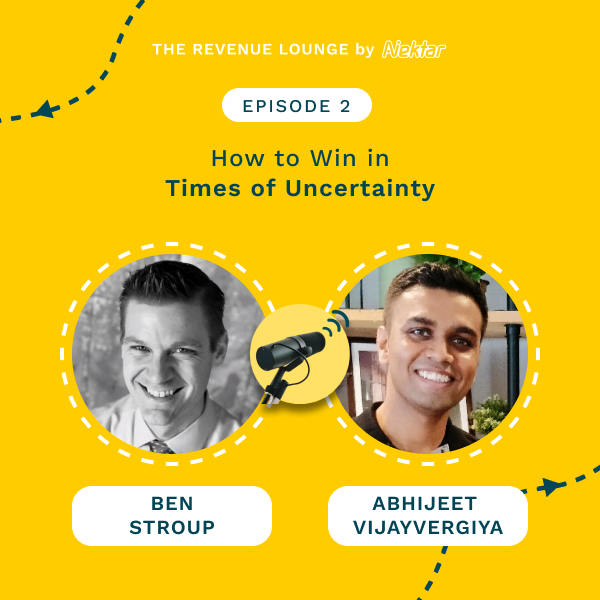
Ep #2: How to Win in Times of Uncertainty
Listen Now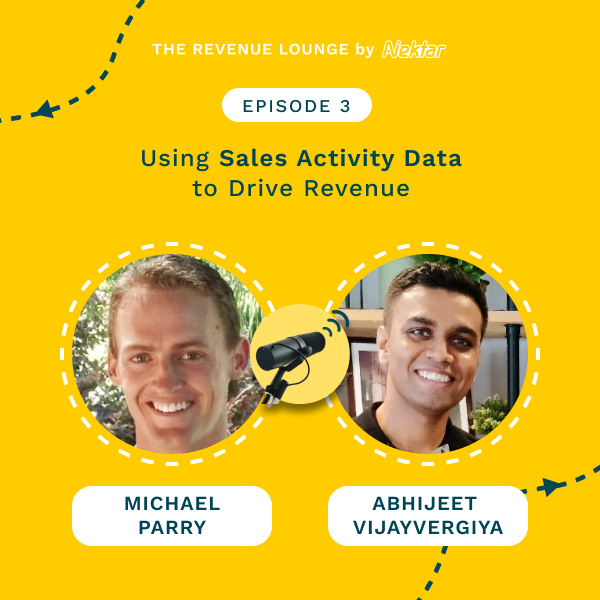
Ep #3: Using Activity Data to Drive Sales Productivity
Listen Now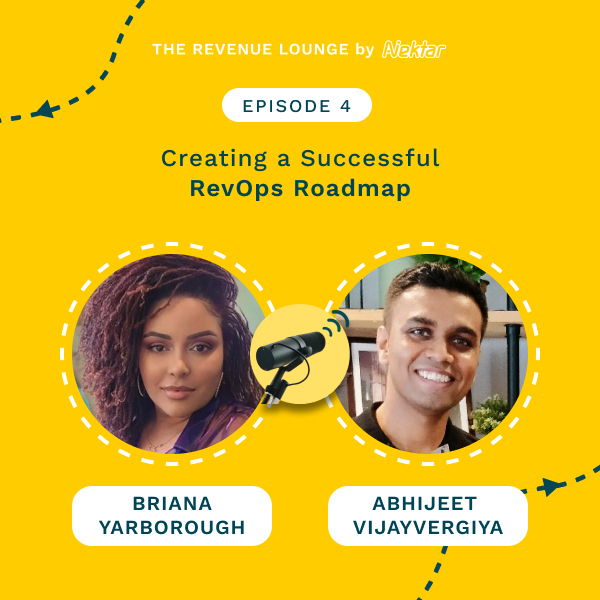
Ep #4: Creating a Successful RevOps Roadmap
Listen Now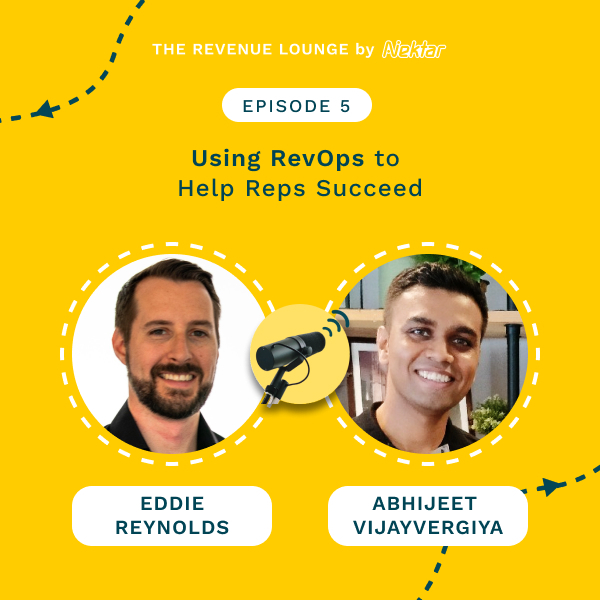
Ep #5: Using RevOps to Help Reps Succeed
Listen Now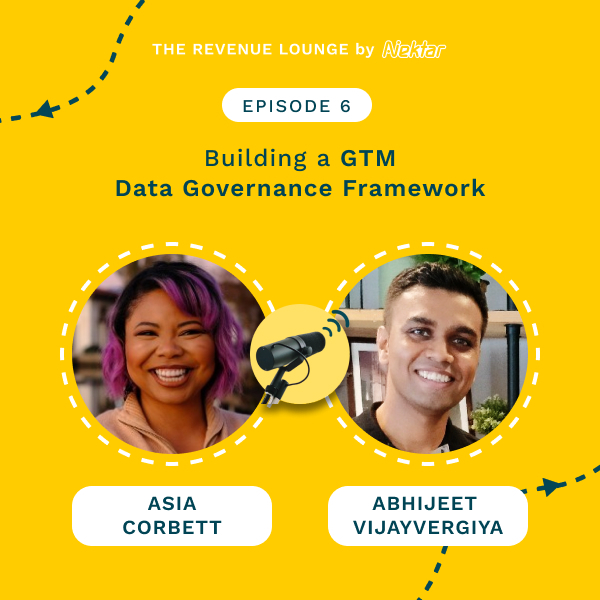
Ep #6: Building a GTM Data Governance Framework
Listen Now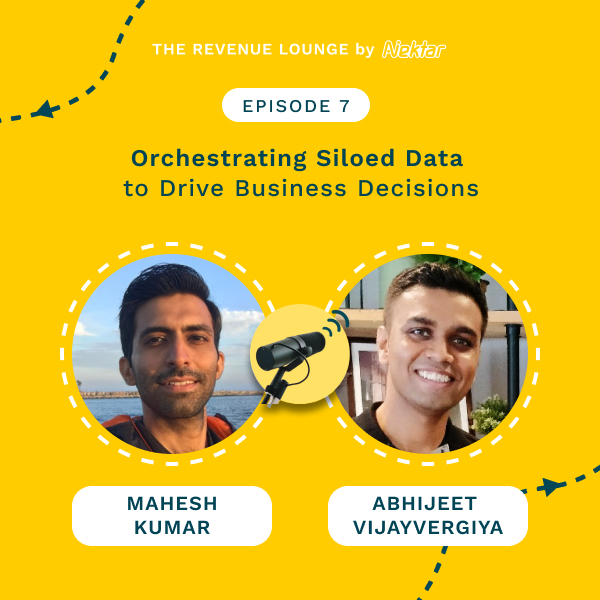
Ep #7: Orchestrating Siloed Data to Drive Business Decisions
Listen Now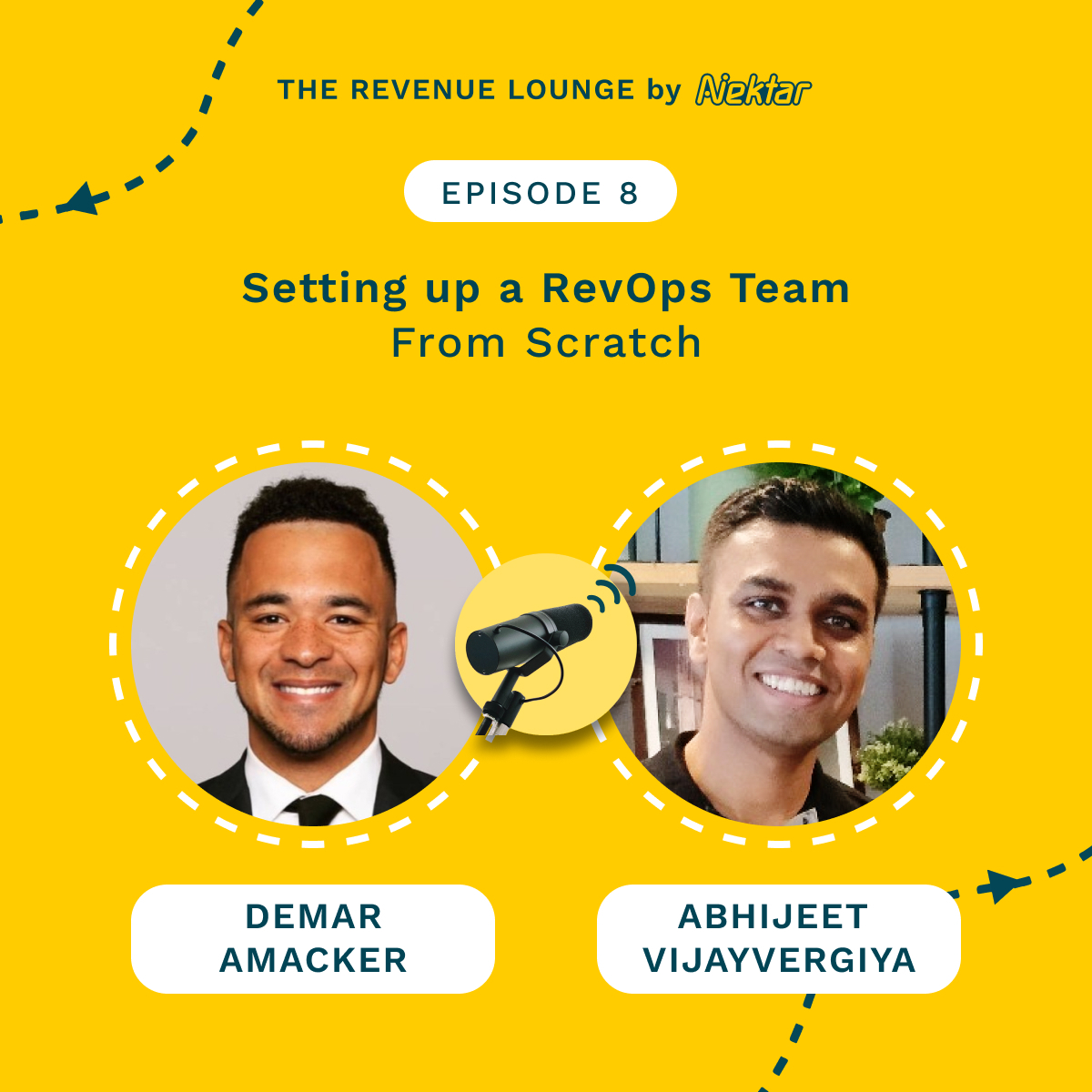
Ep #8: Setting Up a RevOps Team From Scratch
Listen Now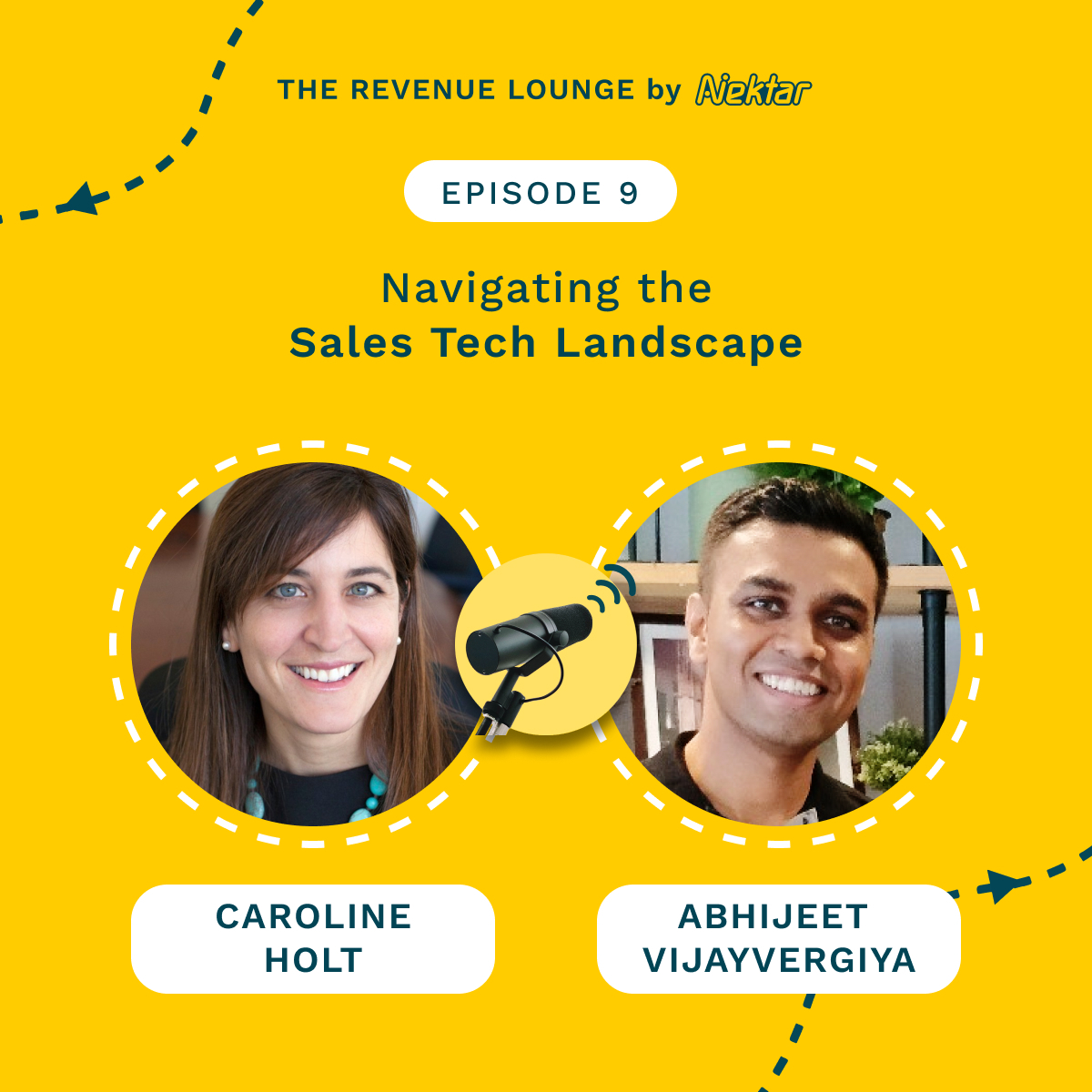
Ep #9: Navigating the Sales Tech Landscape
Listen Now